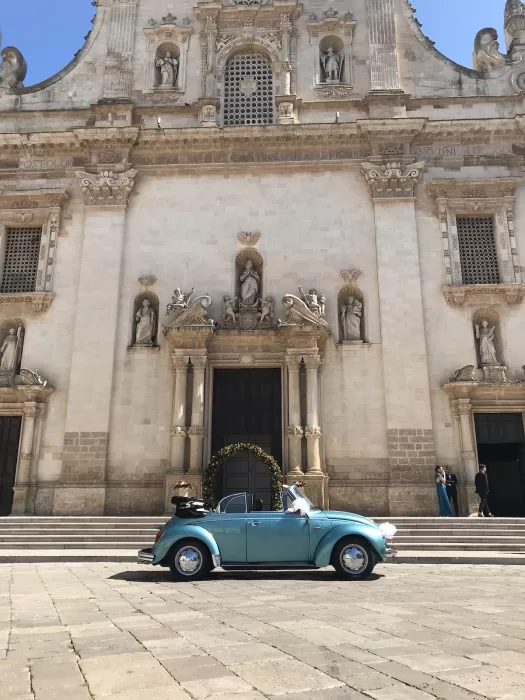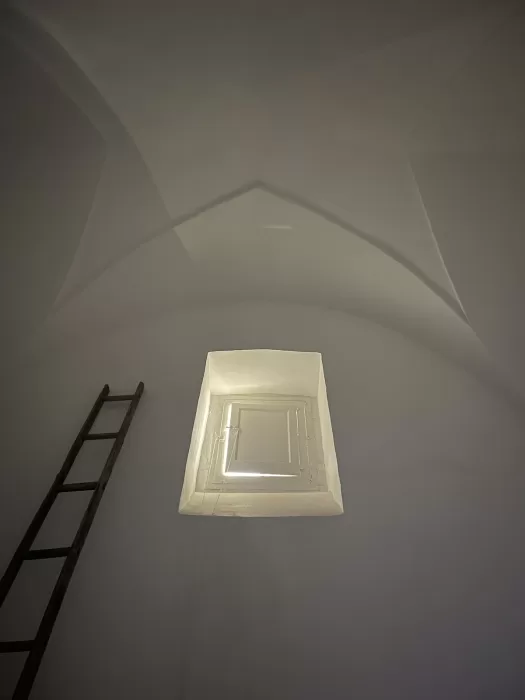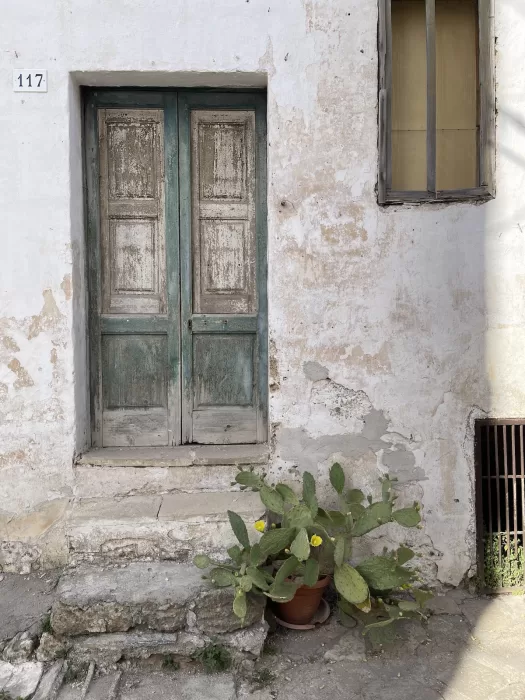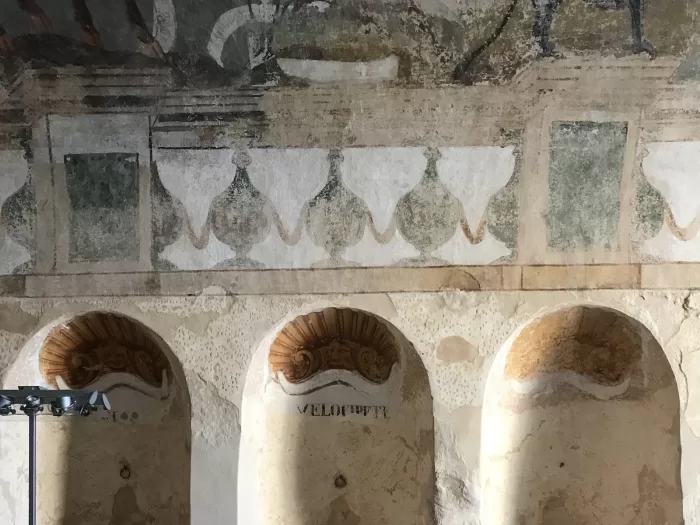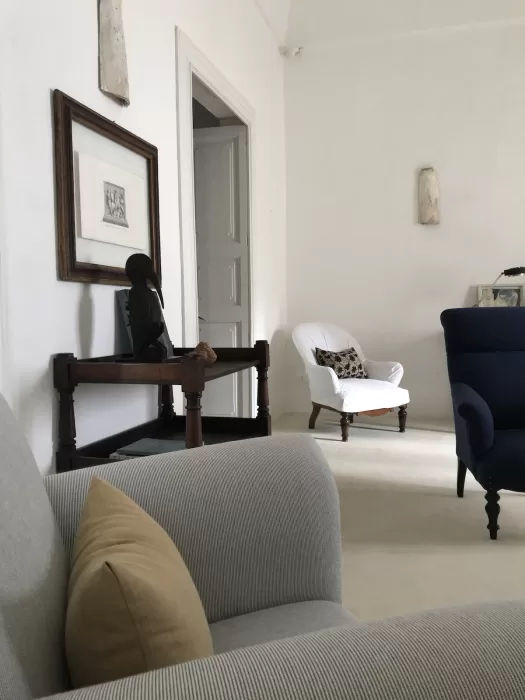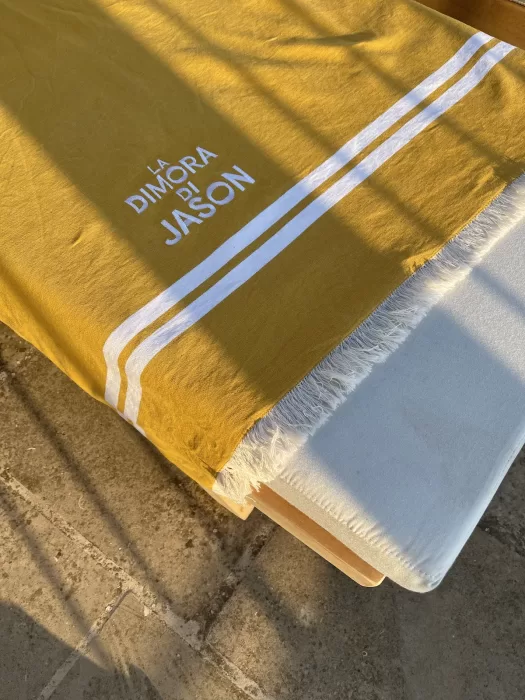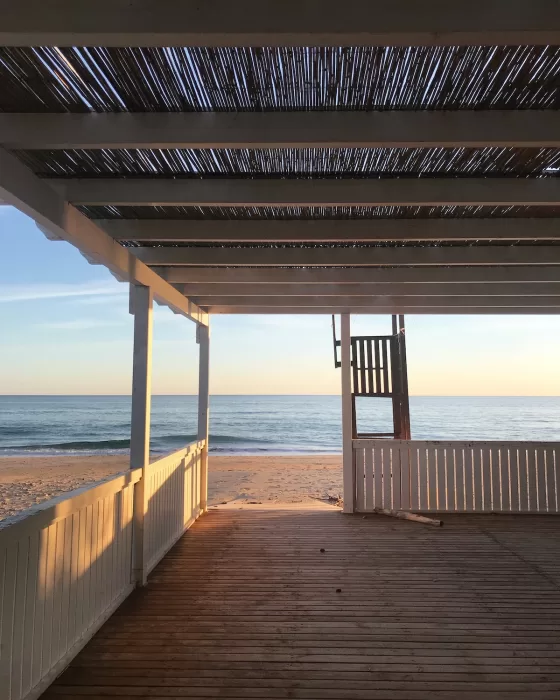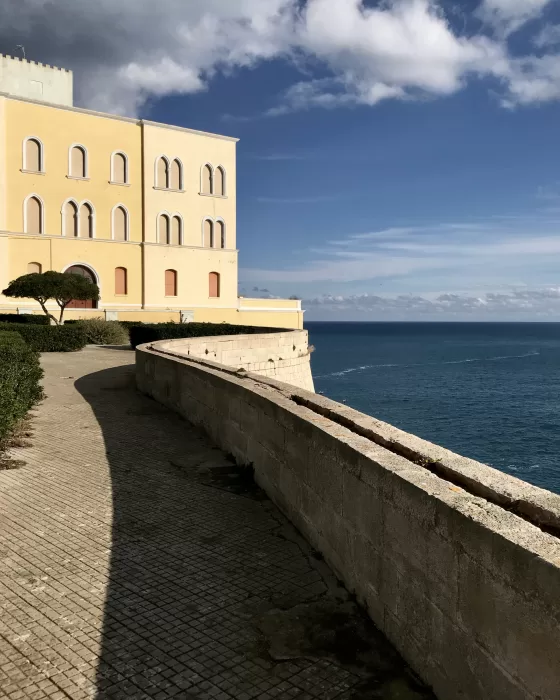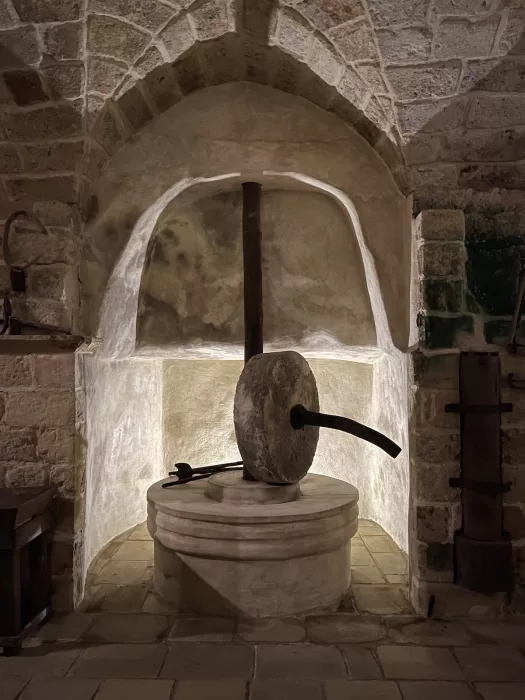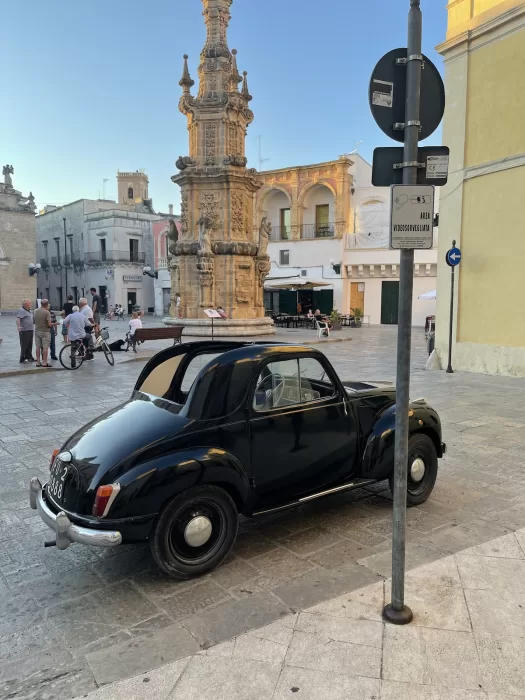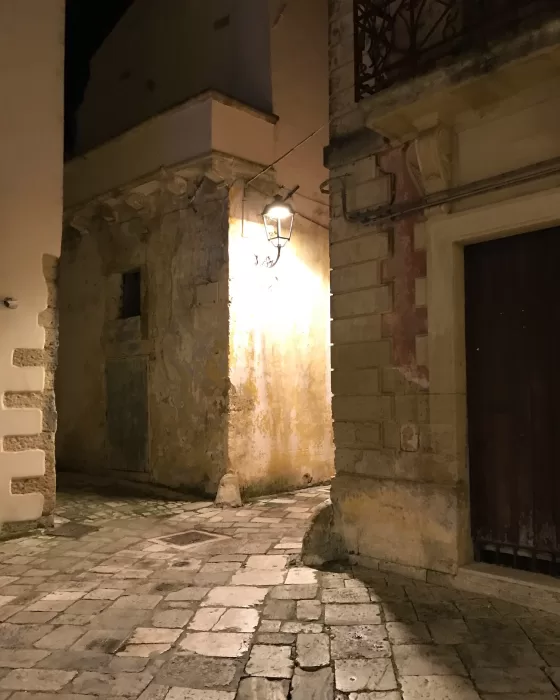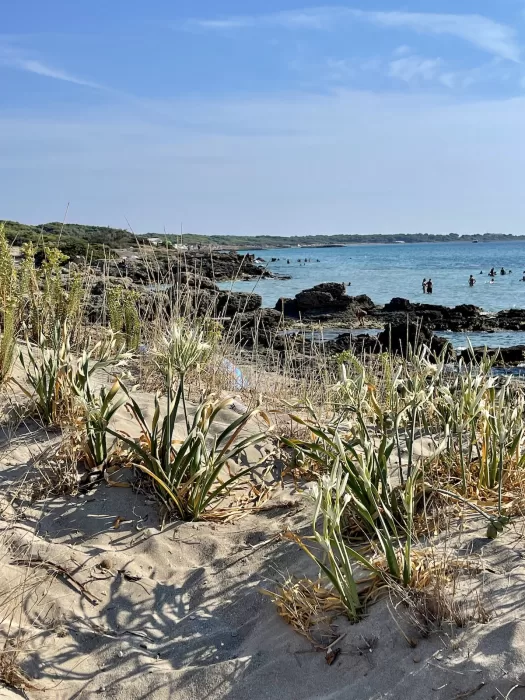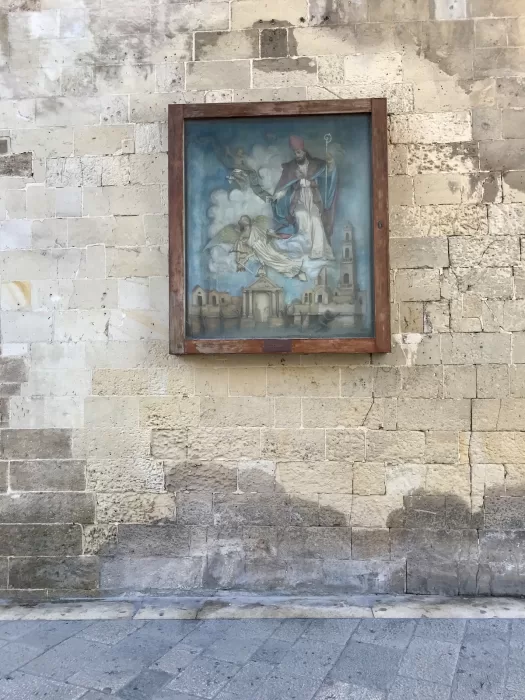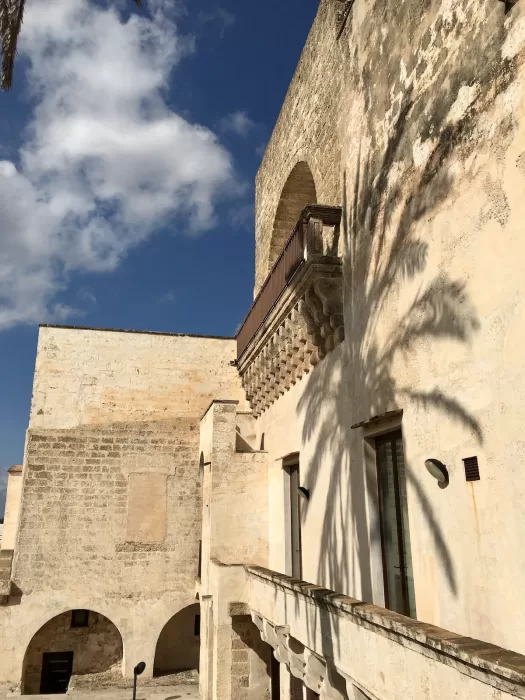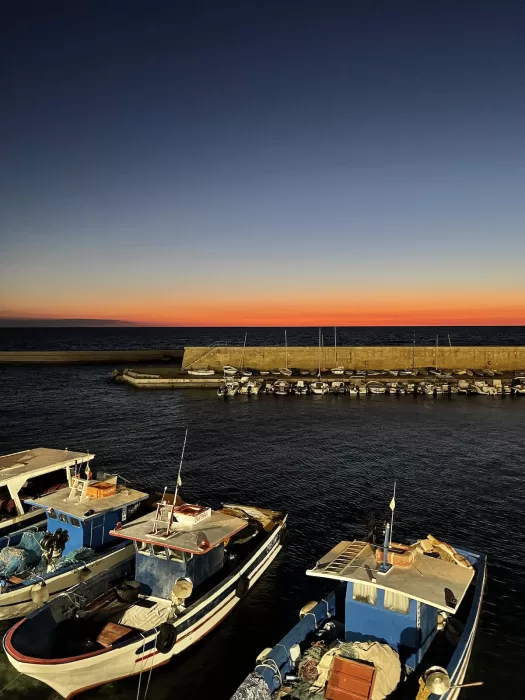The Other Italy.
On the extreme southern tip of Italy, Salento is another world where locals and visitors find common ground amid the echoes of a singular history.
Salento is the tough and weathered stiletto heel of the Italian boot. It is Italy but not as you know it – in many ways it’s not even Puglia, the region to which it belongs. Puglia proper, roughly speaking, is the top two-thirds, encompassing Bari and Brindisi as well as the Anglo-Aussie enclave around Ostuni. It’s richer and more gentrified, with magnificent Norman architecture. Salento is the southern third, beginning just north of Lecce and finishing at Santa Maria di Leuca. It’s Baroque rather than Norman and feels like an island, with the rocky and dramatic Adriatic to the east and the flatter, white-sand coastline of the Ionian to the west, looking toward Calabria. Just 40km across, the stony ground yields little compared to the fertile plains further north. But between these two spectacular coastlines, a tapestry of towns both humble and magnificent, makes Salento a jewel to savour and explore.
Towards the end of 2018, I received a small inheritance and decided to buy a home in Europe. I didn’t mind where it was. Beauty and budget were my only criteria. I looked online at properties in Spain, where I’d lived before, but after a few days decided not to go backwards. Next was Greece, a few spots on the mainland and also Corfu, but the search yielded little in line with my fantasy, an unrealistic mix of Patrick Leigh Fermor and The Durrells. Zooming out from Corfu on Google Maps, my eye fell upon the heel of the boot, a sudden moment of realisation. One of my closest friends in London, Francois, had just bought a house in Puglia. I called him immediately, and asked him to talk me through the process of buying a property in Italy.
Francois’s experience very quickly became my anchor. If he’d bought a house in Rhodes or Montenegro, even Tangier, I’d now be living in Rhodes, Montenegro or Tangier. But he bought in Salento, and on the second day of January 2019, seven weeks after that first call, I found myself pulling up outside his place south of Lecce, command central for the next two weeks while I searched for the home of my dreams.
It didn’t quite begin as planned. We had a wonderful day touring the area, Francois and his partner David taking me to meet the weavers at nearby Le Costantine before lunch in Otranto and a visit to the cathedral, its 12th-century mosaic floor, pagan-like and otherworldly, one of the most mind-blowing things I had ever seen. But when we woke the following morning a massive snowstorm had rendered Puglia white and heavy overnight, a once-in-decades phenomenon according to the Italian press. I remember being on the roof terrace of the first property I saw, one half of a rustic palazzo in Matino, when the agent announced: “From here you can see the bay of Gallipoli,” although in that moment I couldn’t see the agent.
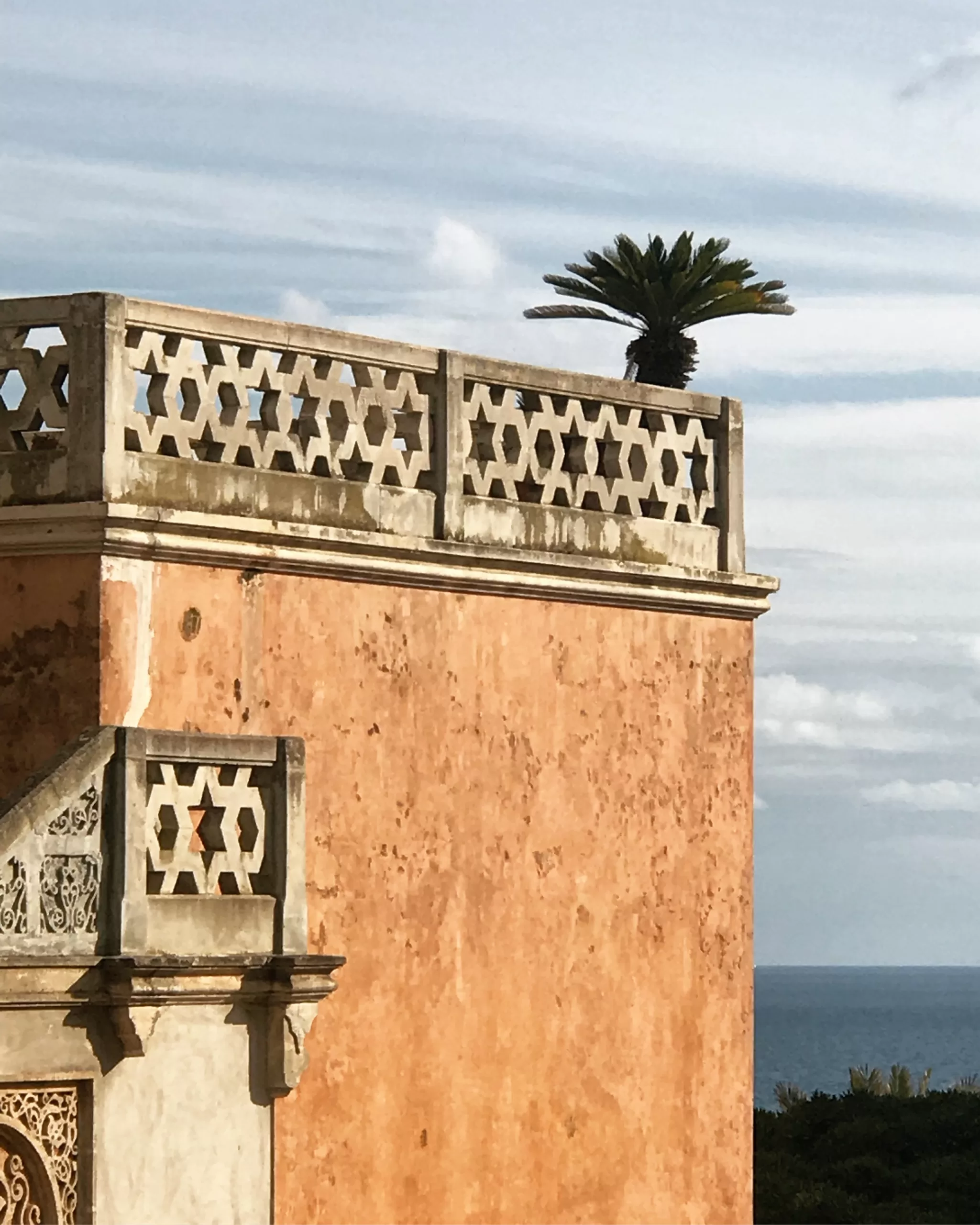

Weather aside, I loved the hunt and viewed 35 properties in as many towns and villages, discovering Salento along the way. I got the selection down to three: a courtyard house in Minervino di Lecce, another courtyard house in the centro storico of Galatina, and the half-palazzo in Matino. To cut a long story short, I’m now the proud owner of half a palazzo in Matino, the first property I saw.
Palazzo de Maria takes its name from the Spanish family who bought and enlarged the building in the 19th century, during The Leopard-like sunset of the Bourbons in Italy. According to a local historian, the ground floor dates from the late 1500s, when it was home to the chapel of the Congregazione di Carità (Sisters of Charity), as well as a hospital for the poor that doubled as a rest stop for pilgrims making their way to Santa Maria di Leuca. (Poor and unwed mothers are said to have left babies at the door for the nuns to raise and one, according to legend, went on to become town mayor.) My half of the building winds its way through these spaces and up to a series of rooms added in the 1700s, finishing on the roof terrace, where the old chicken coop has been converted to a second kitchen.
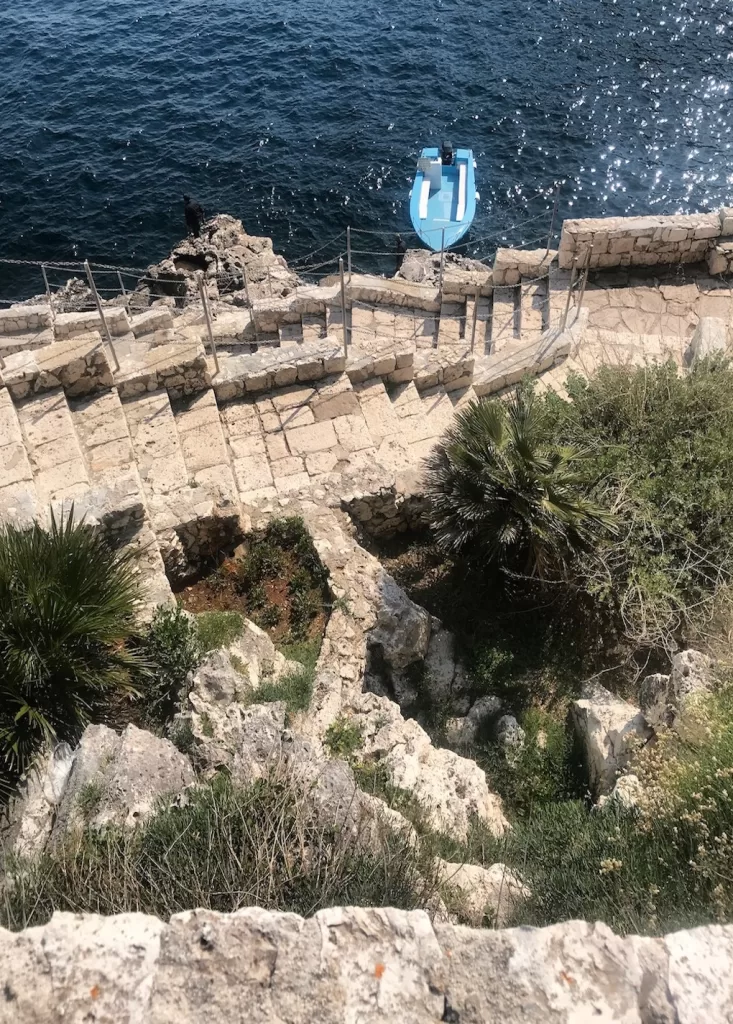
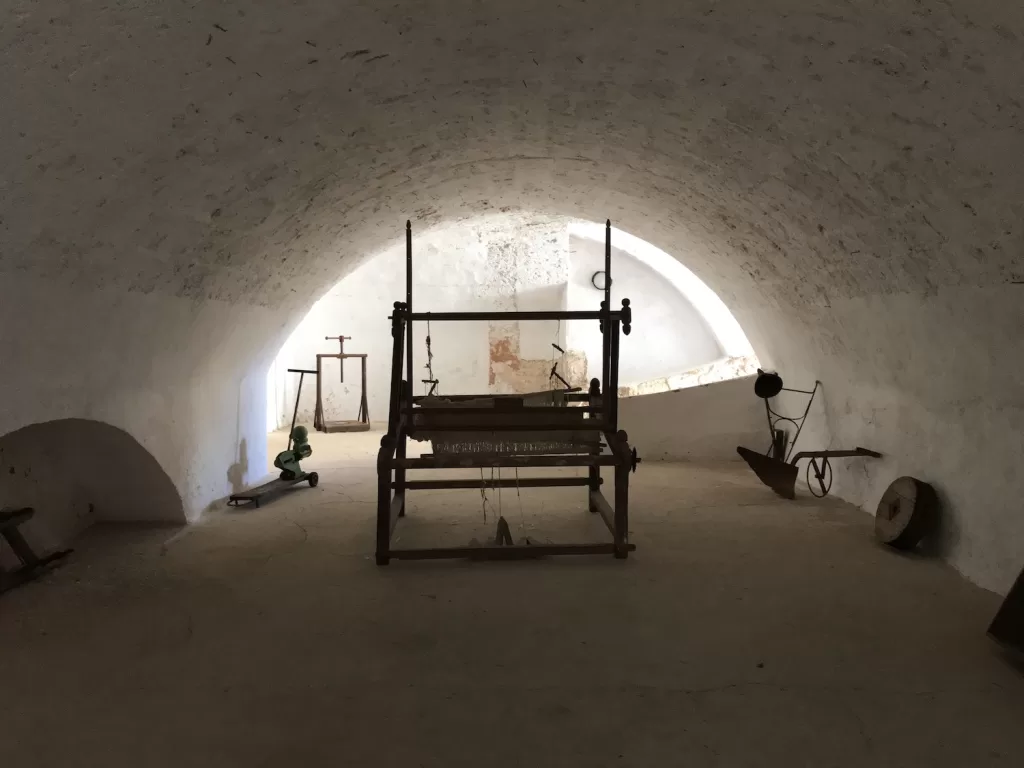
A few doors up is Piazza San Giorgio, which sees a lot of wedding and funeral action as it’s home to the 18th-century Chiesa San Giorgio, while Palazzo dei Marchesi del Tufo at the other end of the square makes a spectacular backdrop to concerts throughout the year. The c.1500 palazzo was constructed over the ruins of a 13th century fortress as the home of the feudal lords “del Tufo” of Matino, including Giuseppe del Tufo, who went from baron to marquis in 1644. His descendants were mad equestrians, a fact reflected in the elaborately frescoed stables they created in the early 18th century – a jewel of Salento so hidden I didn’t discover it until my third trip to Matino. Exotic and fantastic beasts mingle with cherubs and a bishop across the vaulted ceiling, while a line of niched mangers once contained the name of each beloved horse. (Only one name remains: Velocipede.) A new bar, Murusanza, just opened on the corner of the piazza – the name translates as “loving kindness” in the local dialect but contains within it a world of other wonderful values – a great spot to admire the austere magnificence of the palazzo’s facade.
Foscolo, a restaurant and cocktail bar below the palazzo, takes its name from the early 19th century Italian poet, Ugo Foscolo, and played quite the role in my decision to settle in the town. Unsure after my first visit in the snow, I returned a week later for another look, sunshine and blue skies ensuring Matino was at its glorious best. The agent had already given his spiel: Jacopo Etro, scion of the Milanese fashion house, had bought and restored a beautiful 17th century palazzo in Matino; and now, coming in for the kill, he told me to check out the new restaurant opening around the corner. Peering through the glass, everything seemed to be in place – cool op and pop art, mid-century furniture and an impressive array of bottles behind the bar – and I began to see myself in Matino.
Marta Carichino took inspiration from old restaurants of the Amalfi Coast in crafting Foscolo. “I was drawn to places such as San Pietro di Positano,” she tells WISH. “I liked their elegance, but also that they gave me this idea of home. I looked to the 1920s, which reminded me of my family, especially the house of my grandparents, and wanted Foscolo to convey both the elegance and the welcoming hospitality of southern Italy.”
The kitchen is fuelled by Marta’s memories of her grandmother’s cooking, alongside the traditional peasant fare the south is renowned for. Favourite dishes this summer were tuna tartare, the tuna coming from nearby Gallipoli, and spaghetti with mullet ragù. “The recipe is inspired by the Sicilian tradition with red mullet, Sicilian date tomatoes, pine nuts, wild fennel and raisins,” she says. “The red mullet must be fresh and the wild fennel needs to have grown close to the sea.” Linger in the ground-floor bar for the signature gin-based Foscolo – dangerously refreshing in the warmer months – and take a table on the roof terrace for dinner, low lit and romantic, looking toward the sea in one direction and Palazzo dei Marchesi del Tufo in the other.
New friends in Matino include Milanese, Abruzzese, Germans, a Swiss-Brazilian and a New Yorker – fellow wanderers responding to a secret and magical energy force only felt by the few – alongside Matinese, including Marta. (Her husband, Augusto, founder of fashion label Melting Pot, cooks a mean barbecue in their garden on Marta’s day off.) A couple of streets along is another wonderful restaurant, Danilo, specialising in local seafood, and winemakers Carlinovini, who showcase Italian wines from all regions alongside their own, locally produced drops sold from vats at €1.50/litre. Fabulously light and drinkable table wine – primitivo, negroamaro and wonderful rosato – and reason alone to move to Matino.
Other Matino friends include Italian-Belgian Matteo, his sister Carolina and her French husband, Aurelian, who together opened Palais Gentile in late 2019. The guesthouse, next next door to Foscolo, features two rooms, two suites with separate sitting rooms and a gorgeous roof terrace where guests can enjoy a delicious breakfast or sundowners after a day at the beach. It’s super charming, but what really takes Palais Gentile to the next level is the care, expertise and attention to detail of its proprietors. Both Carolina and Aurelian have worked at Le Bristol in Paris, amongst other legendary French hotels, while Matteo was a youth employment expert at the UN for 17 years and now has a catering business in his hometown of Vienna.
“The moment I landed in Matino I felt time slowed down, that colours are brighter and locals are ready to welcome you, regardless of who you are and what you do,” he says. “Savouring an espresso becomes a mandatory routine that one can share with the locals. And they always invite you for a coffee.”
A few weeks later in Galatina I caught up for an early supper with Francois, on his six-week summer vacation and wanting to know what I’d been up to. I thought about it for a moment and then told him I’d essentially been in a trance. Yes, I’d been writing and hosting friends from Milan, going to the beach and exploring. But I’d also done a lot of nothing, and loved it. Salento lento – slow Salento – is what the locals call it.
Wanting to shake things up, I took a road trip to Lecce, to see my lampshade maker – Salento shade makers are the best in the world – and stock up on olive oil soap at Salentum. Palazzo Persone was my digs for the night, a six-room guesthouse in a 16th century building overlooking Basilica di Santa Croce belonging to nearby concept store, Vico dei Bolognesi.

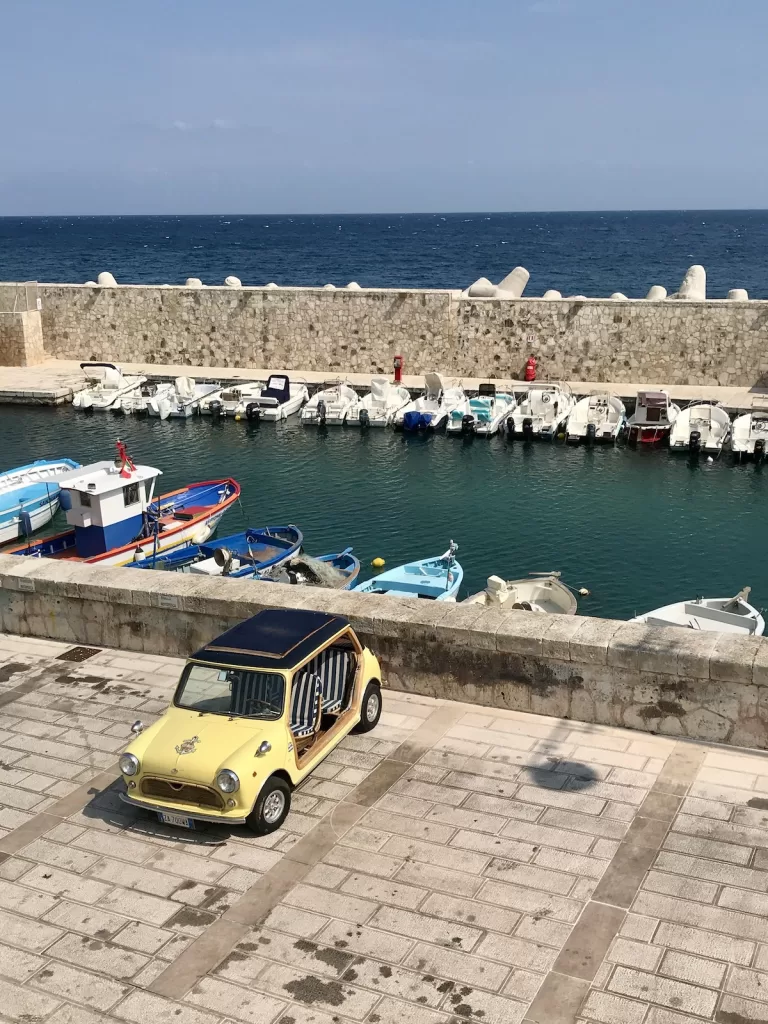
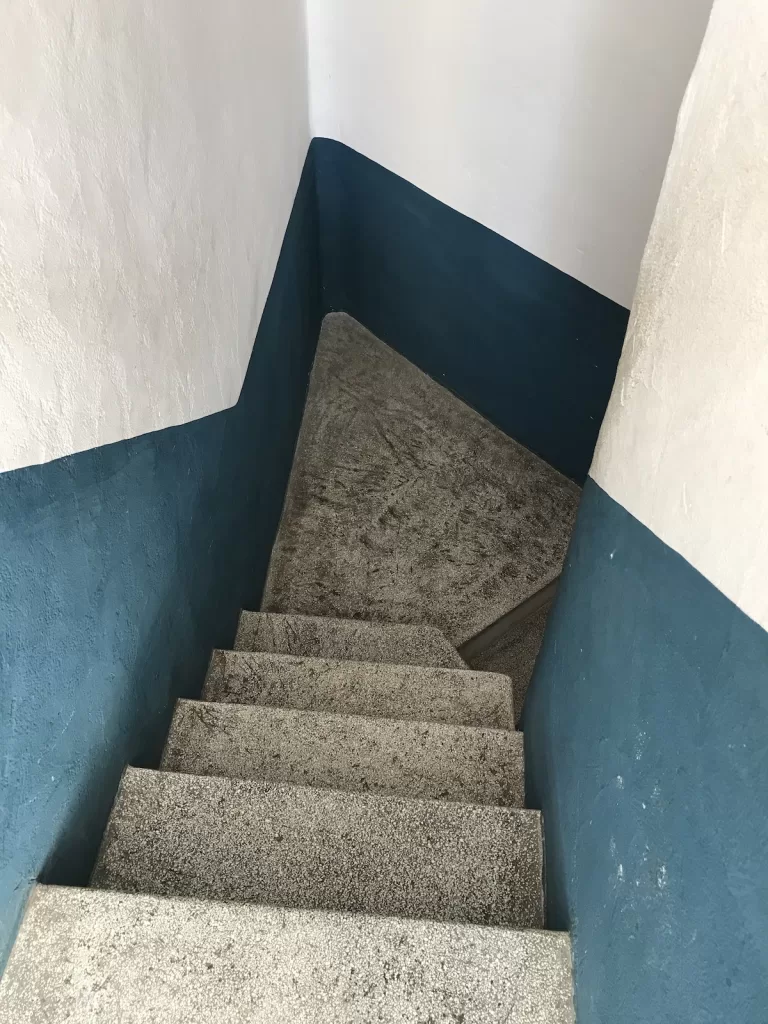
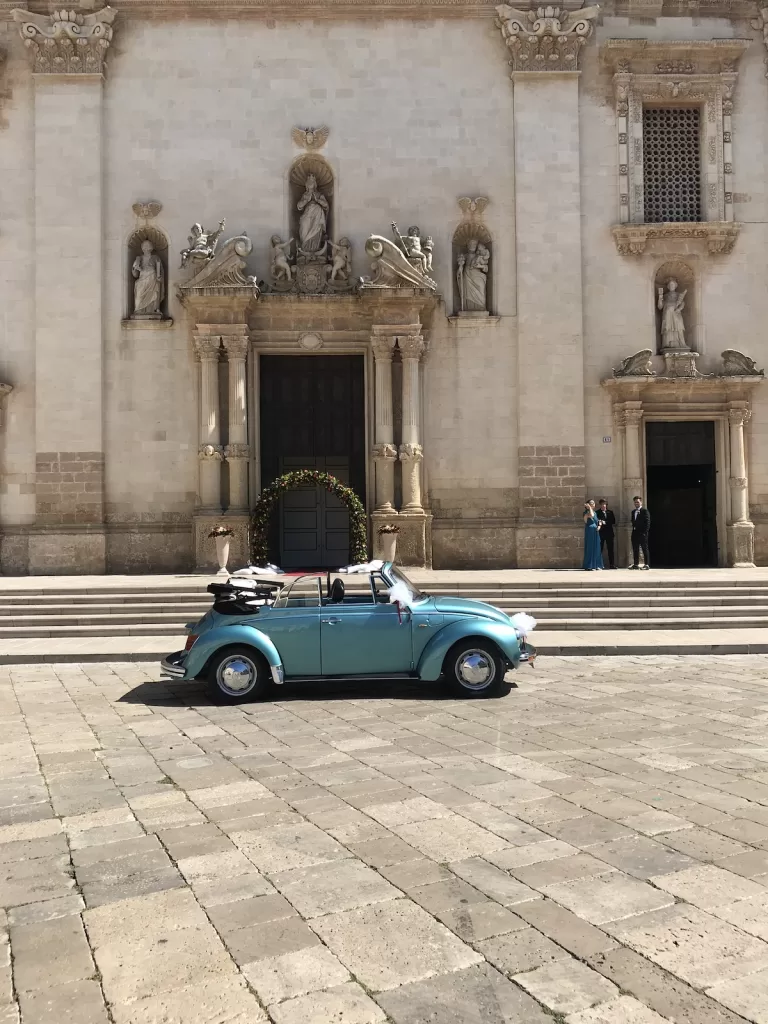
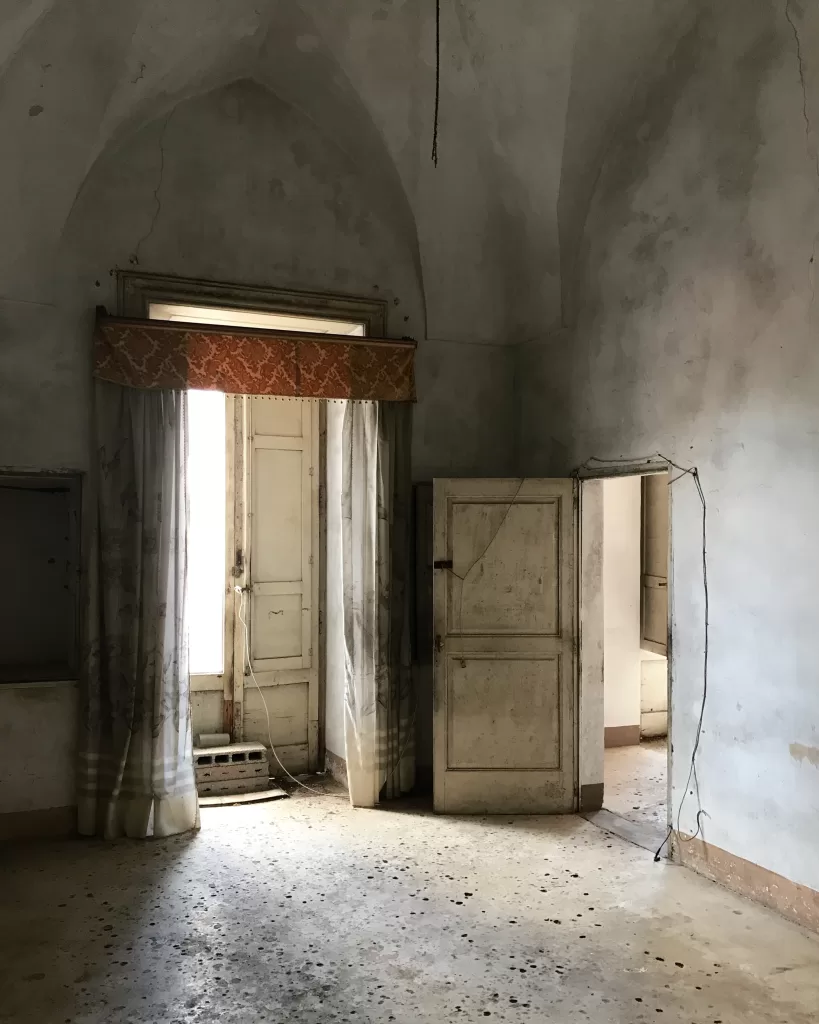
The recently restored facade of Santa Croce (1695) has to be one the most over-the-top expressions of Salento Baroque, which took off when the new-rich landowners of Lecce made fortunes exporting olive oil to light the lamps of the world in the early 17th century. The softness of the local stone, pietra leccese, allowed their elaborate architectural desires to be realised in a manner unique to Salento – on full and flourishing display in the streetscapes of Lecce, a joy to behold day and night and in every season.
Vico dei Bolognesi showcases fashion, jewellery and homewares, including art and vintage furniture, much of which hails from other parts of Italy and abroad (I had my eye on a pair of spectacular Kaare Klint safari chairs), a breath of fresh retail air in a land devoted to local craft.
Palazzo Persone’s rooms reflect dei Bolognesi’s singular and eclectic spirit. Mine had a marvellous timber ceiling – not vaulted, exotic for Salento – and incredible views onto the facade of Santa Croce. Bistro Vico dei Bolgnesi serves typical emiliane fare, such as an authentic white bolognese alongside seasonal local dishes served at tables in the palazzo’s courtyard or on the narrow cobbled street. It’s a great place for people-watching and a spritz. Peer up into one of the courtyard’s corners and you’ll spot a rare statue of Sant’Irene, the former patron saint of Lecce – booted out centuries ago for the male saint Sant’Oronzo – stashed high to save her from the patriarchy.
The next day I headed southwest to Ugento, where the Castello di Ugento has towered over its namesake town for a millennium. A 2013 renovation revealed even more ancient layers: a Norman tower made of large stone blocks attributed to 8th-century BC Messapians – Salento’s original inhabitants before the arrival of the Greeks – was unearthed beneath the castle, alongside artefacts from the Bronze Age. Don Pietro Giacomo d’Amore acquired the castle when he was given the fiefdom of Ugento by the King of Naples in 1643. Today, Castello di Ugento is a fabulous boutique hotel, restaurant and cooking school owned and operated by d’Amore’s descendants.
Castello di Ugento is at the more sophisticated end of Salento accommodation, as befitting a stay in a thousand-year-old castle, with sumptuous rooms around the ground-floor courtyard, as well as the soaring suite, Sala Rosa, upstairs. The rest of the piano nobile was added in the 17th century, when the castle was converted to Baroque palazzo, accessed by a magnificent grey and white painted staircase. A procession of spaces sport baroque frescoes, many of which have been painted over much earlier decorations. Most lovely, though, was a simple, Venetian-style floor in poured red concrete with a single small star at its centre, and the walled garden at the back of the castle – the perfect spot for an aperitivo.


Ugento is just minutes from the Ionian coast and some of Italy’s best sand beaches. If you feel like a sun lounger and an umbrella, Lido Gold is well positioned, with great swimming, good music and delicious food. But I was heading across the peninsula to Lo Scalo, a clifftop restaurant at Marina di Novaglie on the Adriatic for a quick bite and a swim. Just below the restaurant are a dozen sun loungers on smaller terraces spilling down toward the water, part of which is a perfectly formed rectangular harbour cut into the rocks. It’s a great place to read and relax or enjoy a drink with friends between dips in the deep turquoise water.
Lo Scalo dates back to the 1970s, when fisherman Cesarino, who was struggling to support his six children, decided to open a restaurant. Today’s version is (one imagines) more swish but quintessentially Mediterranean, retaining the charm and hospitality of its humble origins, with grandsons Agostino and Cesare at the helm. I’d just ordered my usual – I am yet to resist the spaghettone with black garlic, purple prawns, orange zest and chilli – when I hear from the next table: “You sound even further from home than us.” We strike up a conversation: Jessica is a photographer on vacation with her two children, from New York. She loves Salento and knows it well, and asks what I’m doing here. I mention Matino. “I know Matino,” she says. “We’ve actually been staying at Palais Gentile for the past four days.” This was her fourth or fifth trip to Puglia and she wanted somewhere she and the children could experience authentic village life. “I did extensive research before making the trip and Matino was it,” she said.
When I get back I catch up with Matteo for a drink on the roof terrace of Palais Gentile, excited to tell him of my encounter with Jessica. “But that’s another distinctive feature of Matino,” he tells me, unsurprised. “These unexpected conversations struck up in cafes and bars, a truly undercover melting pot of cultures, opportunities and life experiences.” I feel his words before they leave his mouth. “Once you taste Matino and indulge in Salento,” he says, “nothing will be the same again.”
La Dimora di Jason in Matino is available for rent via Airbnb or directly with Jason.
From a story originally published in WISH.
